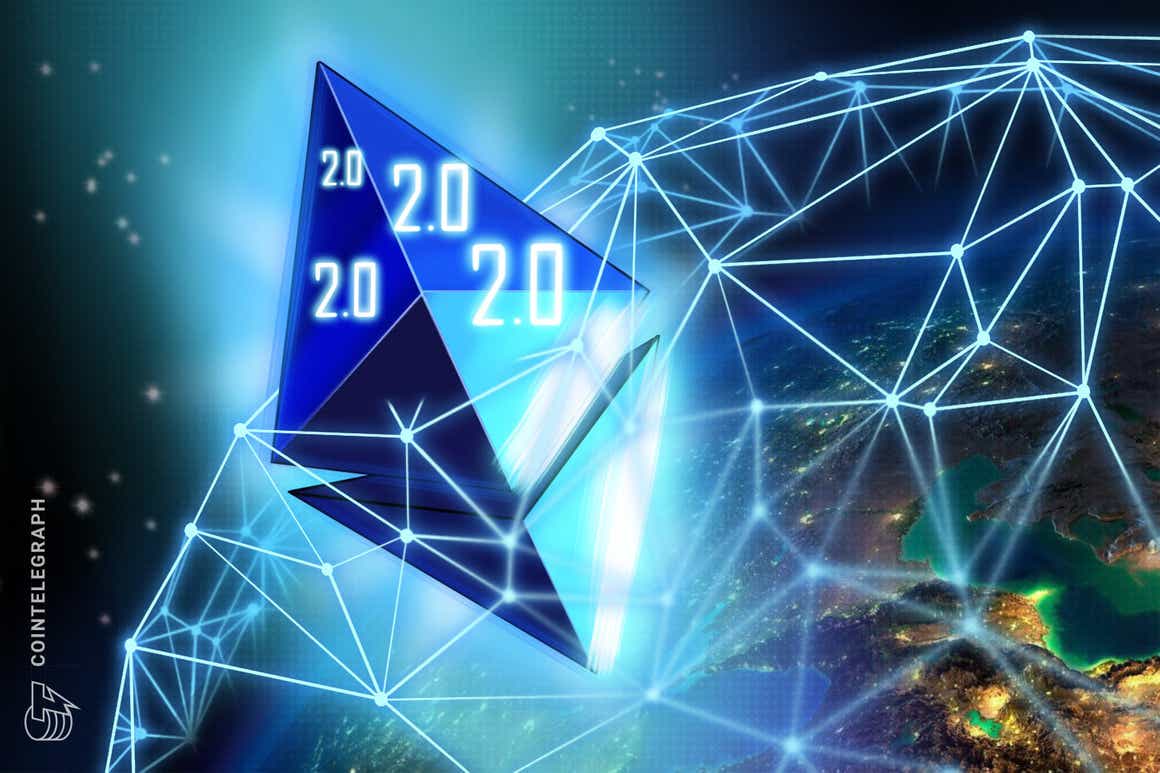The price of Ether (ETH) nearly hit a new all-time high on Oct. 21 before falling below $4,000 after the $435-million options expiry on Oct. 22 sou
The price of Ether (ETH) nearly hit a new all-time high on Oct. 21 before falling below $4,000 after the $435-million options expiry on Oct. 22 soured the mood. The Ethereum network is set to take another step toward Ethereum 2.0 on Oct. 27 at epoch 74240 with the Altair upgrade to Beacon Chain. Eth2 will be an entirely proof-of-stake (PoS) network, for which the community has been gearing up for over a year now.
As per an Ethereum Foundation blog post explaining the development, Altair is an update to the Beacon Chain that brings support for light clients, pre-validator inactivity leak accounting, a rise in slashing severity, and clean-ups to validator rewards allowing for simplified stated management. This is the first scheduled upgrade to the Beacon Chain.
The blog post states that this update represents a “warm-up upgrade” for the Beacon Chain and its associated clients. Essentially, the update will bring several main features to the Ethereum 2.0 network.
First, the introduction of sync committees for light client functions allows light clients to easily sync up the header chain, with low computational and data costs.
Second, the incentive accounting reforms bring three main changes: The storing actions use a more efficient bit field format that reduces complexity, the “inactivity leak” quadratic is based per validator instead of globally — which is insignificant for validators that participate more than 80% of the time — and there are some bug fixes in the reward accounting.
Du Jun, co-founder of crypto exchange Huobi Global, told Cointelegraph: “Pre-Altair, if a chain stops finalizing for two weeks, fully inactive validators lose ~11.8% of their balance and validators active 75% of the time lose ~3.1%. Post-Altair, the fully inactive validator’s loss would be ~15.4% but the 75% active validator’s loss would only be ~0.3%.” This will make the inactivity leak more forgiving to honest, but irregular, validators.
Keep calm and upgrade your client to beacon chain Altair HF compatible version ASAP!
Please ensure the version of your beacon node and validator client is greater than what https://t.co/pK78fogKbd listed.
Altair will go live at epoch 74240 (Oct 27, 2021, 10:56:23am UTC)! pic.twitter.com/d6vPzUT09U
— Hsiao-Wei Wang (@icebearhww) October 25, 2021
Third, the update brings about changes in penalty parameters that make inactivity leaks and slashing more punitive than in the pre-Altair era. There will be three main changes to these parameters. The inactivity penalty quotient is reduced by 25%, which reduces the time it takes for balances to leak by nearly 13.4%. The minimum slashing quotient is decreased from 128 to 64 — the quotient being the minimum fraction of the total balance that a slashed validator will lose. This puts the minimum slashing penalty at 0.5 ETH, double the previous penalty of 0.25 ETH.
The proportional slashing multiplier will also be increased from one to two, entailing that the slashing penalty will now double the percentage of other validators that were slashed within 18 days of that validator. Jun explained this change further: “For example, if you are slashed and within 18 days (in both directions) 7% of other validators are also slashed, pre-Altair your slashing penalty would have been 7%, post-Altair it would be 14%.”
Such tweaks in the incentive structure are often extremely critical for the security of the network, as they reward higher degrees of contribution and adjust across the spectrum accordingly. Currently, however, this change will not directly impact users and decentralized applications (DApps) on the network, as it is an upgrade that impacts only the Beacon Chain.
However, this will affect Ethereum users once the transition to Eth2 finally takes place. Jun said this upgrade will lower the threshold for users to participate in Ethereum 2.0:
“One of the main goals of Altair is to make a light client easy and efficient enough that it can be run inside any environment (mobile device, embedded hardware, browser extension, and even inside another smart-contract-capable blockchain).”
The redistribution of validators’ benefits will result in the redesign of the rewards and penalization structure for validators, making the incentives for the network’s contributors more systematic and easy to understand with logical reasoning.
A warm-up for the Merge
It makes sense that this update is being run as a “warm-up” for Beacon Chain upgrades in the future, as the economic stakes are relatively low right now. Since the node operators will have already experienced a simultaneous upgrade on the chain, any forthcoming upgrades heading toward the Merge should roll out more smoothly — which is more critical, as there will be a significant amount staked on the network in the aftermath of the Merge.
Ben Edgington, an Ethereum developer and product owner for Teku — an Eth2 client developed by ConsenSys — spoke with Cointelegraph about the way Altair ties…
cointelegraph.com
